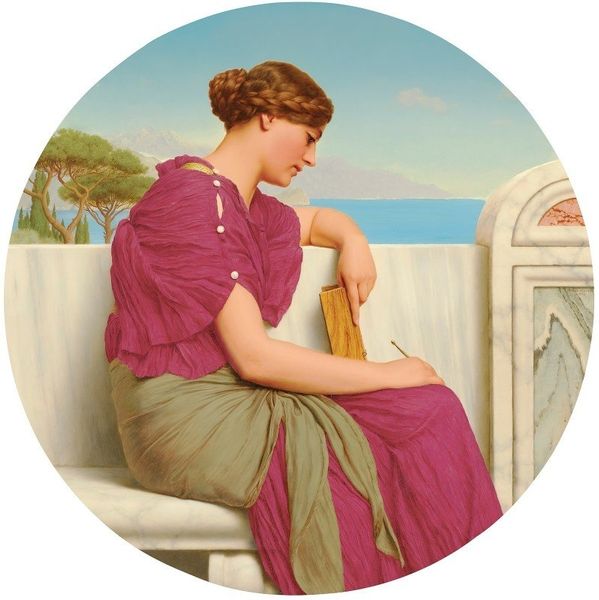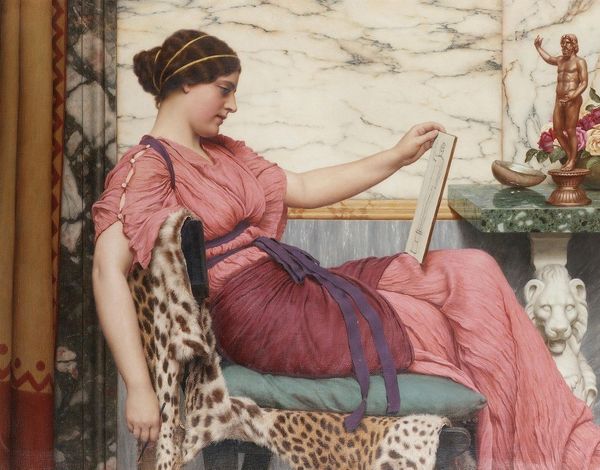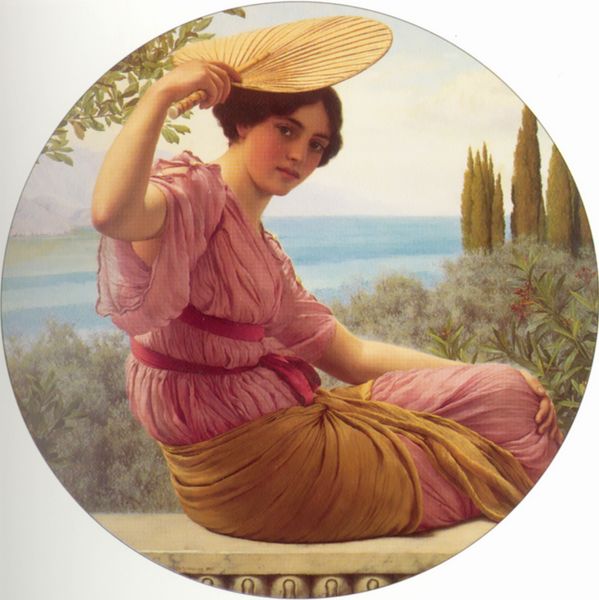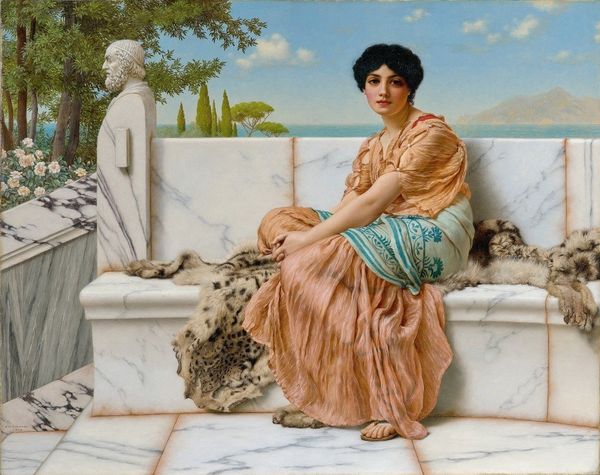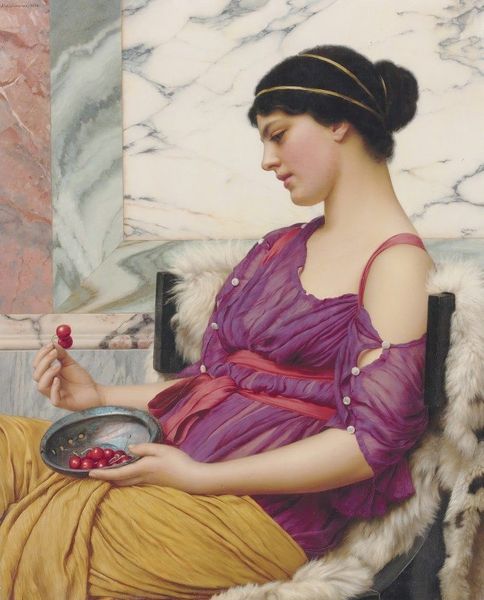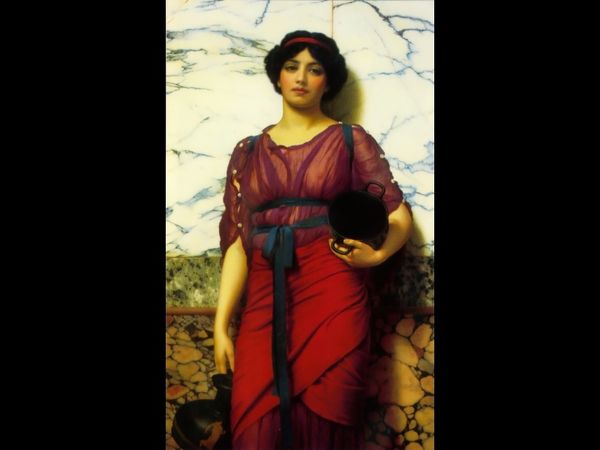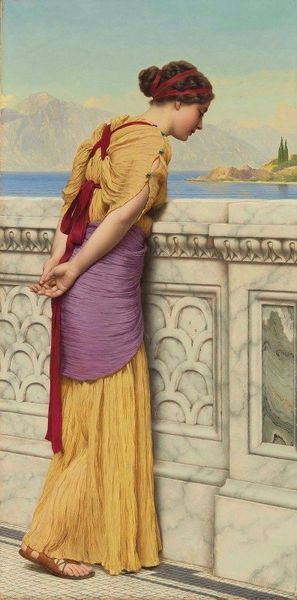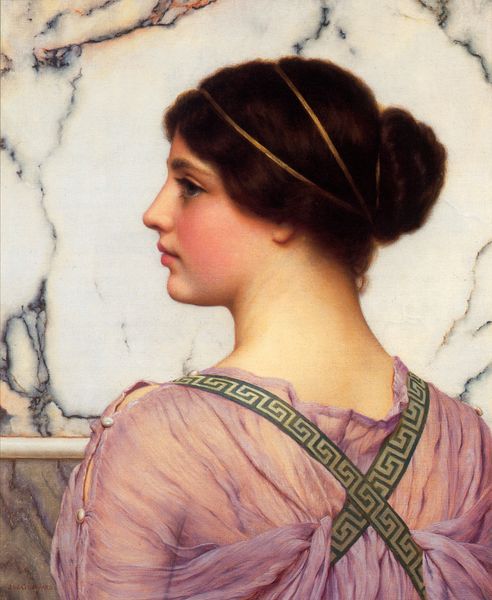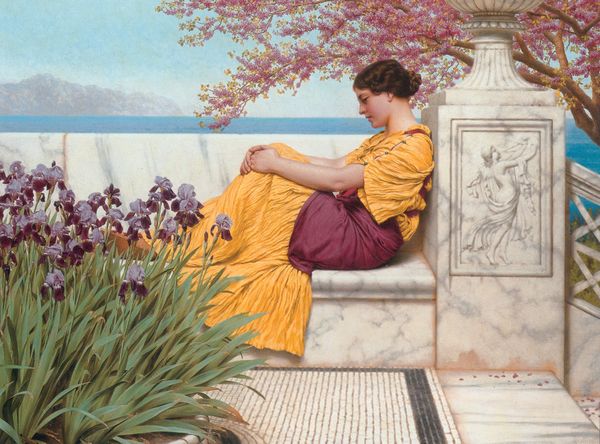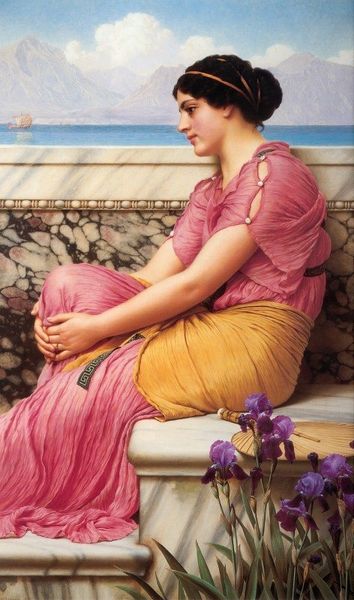
Copyright: Public domain
Editor: Here we have John William Godward’s “Reflections,” an oil painting completed in 1918. The subject, a woman in classical dress, appears to be writing or drawing while sitting on a marble bench. She seems contemplative. What draws your eye to this piece? Curator: Godward's work reflects a fascinating moment in art history. On the one hand, the aesthetics harken back to classicism and romanticism which are revivals of earlier periods that were celebrated within the British Royal Academy. The visual elements—the idealized female form, the setting reminiscent of ancient Greece or Rome—all evoke a certain vision of the past. What’s really striking, though, is how this ideal contrasts with the social and political upheaval happening during and immediately after World War I. What public role could art such as this possibly play in that context? Editor: It almost feels escapist, like a rejection of modern concerns. Do you think the art world saw it that way at the time? Curator: Absolutely. After the war, tastes shifted. Artists started experimenting with abstraction and more overtly political themes, mirroring the changing social landscape. Godward's devotion to this particular aesthetic became increasingly unpopular. Some critics saw his work as outdated and irrelevant in the face of such global trauma. Is it fair for cultural tastes to influence or condemn artists? Editor: It’s a harsh reality, I suppose. He probably felt like he was preserving beauty, but that idea of beauty just fell out of favor. Curator: Exactly! The politics of imagery, even seemingly innocent ones, always change over time, shaping how we perceive both the artist and their work. It's a crucial lesson. Editor: This makes me think a lot about what art institutions choose to display and how those decisions reflect certain cultural values. Thanks, that was very insightful!
Comments
No comments
Be the first to comment and join the conversation on the ultimate creative platform.
